
- Home
- Online auctions
-
Ended auctions
- Coins & Medals
- Philately
- Antiquities
- Old Masters
- Jewellery, Silver, Watches
- Ancient and Modern Glyptic
- Ceramics
- Antiques
- Modern & Contemporary Art
- 20th Century Design and Decorative Arts
- Prints and Multiples
- Asian and Tribal Art
- Photography
- Medieval Art
- Ancient Frames
- Fashion, Textiles & Luxury
- Books, Autographs and Memorabilia
- Wines and spirits
- Oddities, Curiosities & Wonders
- Info
- Live Auction
- Home
- Auction 82
- 172 AN EXCEEDINGLY RARE AND EXTREMELY IMPORTANT PORCELAIN CUP ...
Lot 172 - Auction 82
Description
AN EXCEEDINGLY RARE AND EXTREMELY IMPORTANT PORCELAIN CUP WITH A FINE GILT SILVER MOUNT
the cup China, Jiajing period (1522-1566), the unmarked mount probably English 1580-1585 circa
Decorated to the exterior with four large red circular medallions on the white glazed body, the porcelain cup supported by a slender stem rising from a circular domed foot and secured by four vertical pierced straps, the rim underlined by a scalloped edge, the whole mount enriched with finely incised, casted and chased details, the foot with masks alternating to fruits, the mid section of the stem with three lion masks with movable rings in their mouths and three shells, the four vertical stripes on the upper section terminating with Bacchanal masks.
13,3 x 9,3 cm
Provenance: by repute, Elisa Baciocchi (1777-1820), Granduchess of Tuscany and sister of Napoleon Bonaparte; acquired by Francesco Lugrammi, high official of the Kingdom of Italy, and thence to his son Giulio Lugrammi (1876-1958), General Commander of the Port of Marseilles and senator of the Kingdom of Italy who participated to the 1919 Peace Conference in Paris, thence to his son (1906-1991) and grandson.
This cup is a masterpiece, from many points of view.
Its main importance, however, is probably the story it tells. A very long story, lasting for more than four centuries. A story which involves high personages from at least two continents, Asia and Europe. From the Chinese Emperor Jiajing (reign 1522-1566) to probably Elizabeth Queen of England (1533-1603), from Elisa Baciocchi Granduchess of Tuscany and sister of Napoleon, to the Lugrammi family, which proudly owned this piece for two centuries.
Together with these very influential names in the world history, it tells us also about a crucial moment in the fascinating story of the encounter between two very distant cultures, China and Europe.
From the 14th century porcelain has surely been the most precious material which could arrive to Europe from China. From the epoch of Marco Polo onward, Chinese ware became the most desiderable good for all the European princes. Before the beginning of the direct trade between Asia and the Portoguese from the early 16th century, the number of Chinese porcelains which reached Europe was scarce. Even if they were not able to recognise the real composition of that material, the most influential members of the European élite perfectly understood the extraordinary qualities of Chinese porcelain, its thin and white body, its characteristics of being waterproof and the vividness of its enamelled or moulded decoration with motifs completely different from anything seen until then.
Chinese porcelain was simply precious, and it was then worthy enough to be enriched with mount, often realised by the best artists specialised in the working of metals. The rarity of Chinese porcelain and the preciousness of the mounts were qualities then combined to create extremely fine objects proudly exhibited in the most important Cabinets of Curiosities (Wunderkammern), those rooms where the European princes preserved their most valued treasures.
Great part of the still existing Chinese porcelain arrived in Europe in the 14th and 15th centuries presents in fact a metal mount, or was originally provided with such an embellishment, as for example the famous “Gaignières-Fonthill” bottle vase (Dublin, National Museum), given as a gift in 1381 by Louis I of Hungary to Charles III King of Naples (A. Lane, The Gaignières-Fonthill Vase. A Chinese Porcelain of about 1300, in “The Burlington Magazine”, CIII, 1961, 697, pp. 124,-132, pl. 2-11), or the céladon-glazed cup now in the Hessisches Landesmuseum in Kassel, acquired from Count Philipp von Katzenelnbogen around 1433-34 and certainly mounted before 1453 (Porzellan aus China und Japan. Die Porzellagalerie der Langgrafen von Hessen-Kassel, Kassel 1990, pp. 10-11, 216-218).
The use to enhance Chinese porcelain with metal mount continued also in the later centuries, even if the amount of imported porcelains from China dramatically grew with the advent of the various European East India Companies in the 16th and 17th centuries, reaching a peak in 18th century France. The style of these mounts obviously changed according to the development of the European taste.
The gilt silver mount which embellished the present cup shows stylistic features which immediately recall late Renaissance and Mannerist canons, for the presence of decorative motifs such as the typical grotesques interlaced with lion masks, escallops shells and Bacchanal masks.
A taste that can be related to the period of reign of Elizabeth, Queen of England and Ireland from 1558 to 1603. It is known from documentary evidence that the Tudor Queen received as gifts in the 1580’s a number of mounted porcelains (A. Jefferies Collins, edited by, Jewels and Plate of Queen Elizabeth I, London 1955, p. 592, n. 1582), among them the Chinese bowl now in the Metropolitan Museum of Art in New York (inv. n. 68.141.125a/b, Gift of Irwin Untermyer, 1968), whose mount is presumably the work of one of her favourite goldsmiths, Affabel Partridge. The mount of the cup in the Metropolitan Museum cannot be compared with the unmarked mount of the piece discussed here, this last one being more complex in its general conception and clearly richer in its decorative details. However, its stylistic features are those typical of the artists working in Europe at the end of the 16th century, also in England at the court of Queen Elizabeth, and there are some possibilities it could be also a work of the already cited Affabel Partridge.
The earliest known Chinese porcelain mounted in England is the “Lennard Cup”, so-called because it was owned by Samuel Lennard (1553-1618), lord of a manor at Wickham Court, West Wickham, Kent (British Museum, Percival David Collection: see S. Pierson, Percival David Foundation of Chinese Art. A Guide to the Collection, London 2003, p. 71, n. 58). The porcelain is Jiajing period, the beautiful mount has a London hallmark which allows to date it to 1560-70. From a stylistic point of view, despite many differences, it shares the same chronology with the cup here presented.
Yet regarding the mount, it seems useful to have a comparison also with the two so-called “Von Manderscheidt” cups, one sold in London by Sotheby’s (5 february 1970, lots 169, 170), the other one in the collections of the Victoria & Albert Museum (R. Kerr, Chinese Porcelain in Early European Collections, in Encounters. The Meeting of Asia and Europe 1500-1800, exhibition catalogue edited by A. Jackson and A. Jaffer, London 2004, pp. 44-51: p. 48, pl. 4.4). An inscription on one of the bowls records that the two pieces were mounted in 1583 in memory of Count Hermann von Manderscheidt for the will of his brother Count Eberhart who very probably acquired them a year before while travelling to Jerusalem, presumably in Turkey. Even if these two porcelain cups are from Jiajing period as the bowl here discussed, the style of their decoration is not comparable, while there are many affinities in the taste of the mount, decorated with groups of fruits and masks.
It is significant in the context we are discussing also the resurgence of diplomatic relationships between England and the Ottoman Empire during the reign of Queen Elisabeth. The two countries signed a treaty in 1580 with the aim to establish better commercial links, thanks to the activity of William Harborne (d. 1618) who was appointed ambassador in 1586. At that time the Turkish sultans have already amassed a great quantity of Chinese porcelains, the base of the fabulous collection now in the Topkapi Saray Museum in Istanbul. The presence of a bowl very similar to the one we are discussing here in that collection (R. Krahl, Chinese Ceramics in the Topkapi Saray Museum, 2 volls, London 1986: II, p. 824, n. 1658), could be a proof regarding the provenance of our unmounted Chinese cup from there, even if there is no documentary evidence for this hypothesis.
The Topkapi Saray Museum cup is dated to Jiajing period, even if it is unmarked. Its main decorative feature is the presence of the red round medallions on the exterior of the walls. This motif is typical of a group of bowls produced in Jingdezhen toward the mid 16th century, very much appraised also in Japan where the motif takes the name of akadama (literally “red dot pattern”). Sometimes the bowls of this type present a supplementary gilt decoration, and this is the reason because they are known with the Japanese definition of kinrande. Bowls with kinrande style decoration were also among the Jiajing period porcelains that reached Europe from the mid 16th century, as for example the two cups from the Castle of Ambras (W. Seipel, Exotica. Portugals Entdeckungen im Spiegel fürsstlicher Kunst- und Wunderkammern der Renaissance, exhibition catalogue, Wien 2000, n. 209).
* This lot has an export license released by the Italian government.
Please use the registration form to send us your participation request, or, if you are already registered and authorized, use the login box on the top.
For any information please contact info@bertolamifineart.com
Categories
Auction: Auction 82
- China - Archaic bronzes
- China - Ceramics and porcelain
- China - Bronzes
- China - Jade and hardstones
- China - Sculpture
- Tibet- Sculpture
- China - Cloisonnè
- China - Glass
- China - snuff bottles
- China - Painting
- China - carpets and Textile
- Tibet - paintings
- Islam
- India
- Gandhara
- South East Asia- sculpture
- Suouth East Asia - weapons
- South East Asia
- South East Asia - Lacquer
- South East Asia - paintings
- Korea
- Japan - Militaria
- Japan - Lacquer
- Japan - Ceramic and porcelain
- Japan - Textile
- Japan - Sculpture
- Japan - Cloisonnè
- Japan - Metal
- Japan
- Bonsai
 Respecting your privacy is our priority
Respecting your privacy is our priority
This site uses cookies to improve user experience and to collect information on the use of the site. There are also cookies that can be used for the selection of personalized advertisements and promotional content. You can read our cookie policy, accept all cookies and continue browsing by clicking on "Accept" or customize your choice by clicking on "Customize".
Cookie Policy
Cookies
To make this site work properly, we sometimes install small data files called "cookies " on your device. Most of the big sites do the same.
What are cookies?
A cookie is a small text file that websites save on your computer or mobile device while you visit them. Thanks to cookies, the site remembers your actions and preferences (for example login, language, font size and other display settings) so that you do not have to re-enter them when you return to the site or browse from one page to another.
How do we use cookies?
Third party cookies
Google Analytics
This site uses Google Analytics to collect information about the use of users of its website. Google Analytics generates statistical and other information through cookies, stored on users' computers. The information generated relating to our website is used to make reports on the use of websites. Googl
How to control and modify cookies?
You can modify or withdraw your consent at any time from the cookie declaration on our website.
Privacy Policy
Find out more about who we are, how you can contact us and how we process personal data in our privacy policy .
The necessary cookies help to make the website usable by enabling basic functions such as page navigation and access to protected areas of the site. The website cannot function properly without these cookies.
| Name | Supplier | Purpose | Expiry |
|---|---|---|---|
| cookieConsent | Bid Inside | Stores the user's cookie consent status for the current domain | 6 months |
| PHPSESSID | Bid Inside | Preserve the user's status in the different pages of the site. | When the browsing session ends |
| f_display | Bid Inside | The f_display cookies memorize the display mode chosen by the user in the pages where there are lists | When the browsing session ends |
| f_page | Bid Inside | The f_page cookies store the page viewed by the user in the pages where there are lists | When the browsing session ends |
| f_rec_page | Bid Inside | The f_rec_page cookies store the number of elements to be displayed per page chosen by the user in the pages in which there are lists | When the browsing session ends |
| f_order_by | Bid Inside | The f_order_by cookies store the sorting parameter selected by the user in the pages where there are lists | When the browsing session ends |
| f_order_dir | Bid Inside | The f_order_dir cookies store the ordering direction chosen by the user in the pages where there are lists | When the browsing session ends |
| watch_list_show_imgs | Bid Inside | The watch_list_show_imgs cookie stores the user's choice to show or hide lot images on the watch list page | When the browsing session ends |
| selected_voice | Bid Inside | The selected_voice cookie stores the voice selected by the user for the speech synthesis present in the live auction | 1 Month |
| include_autobids | Bid Inside | The include_autobids cookie stores the user's choice to show or hide their auto-bids on the 'Your bids' page | 6 months |
Analytical cookies help to understand how visitors interact with the website, collecting and transmitting statistical information to the Data Controller.
| Name | Supplier | Purpose | Expiry |
|---|---|---|---|
| _ga | Register a unique ID used to generate statistical data on how the visitor uses the website. | 2 years | |
| _gat_gtag | Used by Google Analytics to limit the frequency of requests | 1 day | |
| _gat | Used by Google Analytics to limit the frequency of requests | 1 day | |
| _gid | Register a unique ID used to generate statistical data on how the visitor uses the website. | 1 day | |
| __utma | Bid Inside | Used to distinguish users and sessions. The cookie is created when the javascript library executes and no existing __utma cookies exists. The cookie is updated every time data is sent to Google Analytics. | 2 years |
| __utmt | Bid Inside | Used to throttle request rate. | 10 minutes |
| __utmb | Bid Inside | Used to determine new sessions/visits. The cookie is created when the javascript library executes and no existing __utmb cookies exists. The cookie is updated every time data is sent to Google Analytics. | 30 minutes |
| __utmc | Bid Inside | Not used in ga.js. Set for interoperability with urchin.js. Historically, this cookie operated in conjunction with the __utmb cookie to determine whether the user was in a new session/visit. | When the browsing session ends |
| __utmz | Bid Inside | Stores the traffic source or campaign that explains how the user reached your site. The cookie is created when the javascript library executes and is updated every time data is sent to Google Analytics. | 6 months |
| __utmv | Bid Inside | Used to store visitor-level custom variable data. This cookie is created when a developer uses the _setCustomVar method with a visitor level custom variable. This cookie was also used for the deprecated _setVar method. The cookie is updated every time data is sent to Google Analytics. | 2 years |
Preference technical cookies allow a website to remember information that affects the way the site behaves or presents itself, such as your preferred language or the region you are in.
We do not use cookies of this type.Profiling cookies are used for marketing purposes, to monitor website visitors. The intent is to display relevant and engaging ads for the individual user.
| Name | Supplier | Purpose | Expiry |
|---|---|---|---|
| _fbp | Facebook Pixel, targeting and advertising cookie. This cookie allows us to show our advertising to people who have already visited our website, when they are on Facebook or on a digital platform supported by Facebook Advertising. | 6 months | |
Unclassified cookies are cookies that are being classified, together with individual cookie providers.
We do not use cookies of this type.



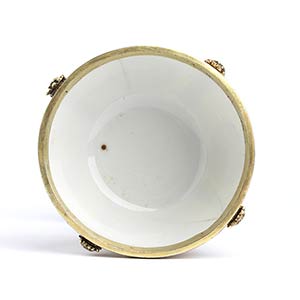
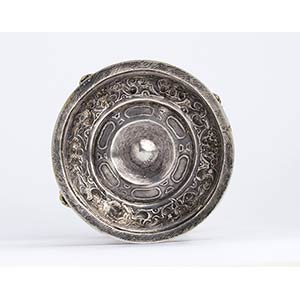
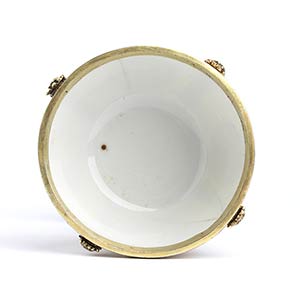
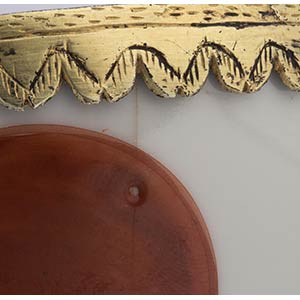
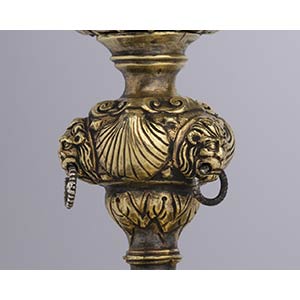
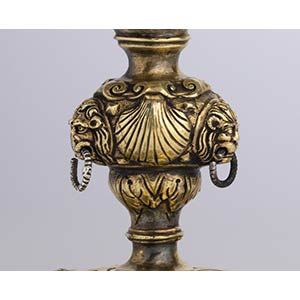
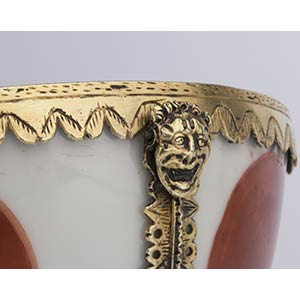
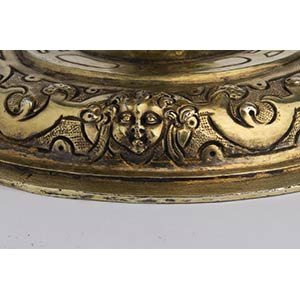
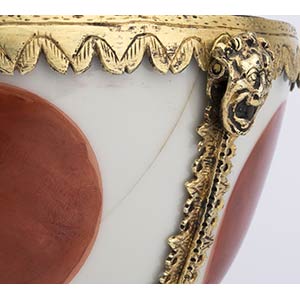

 173
173